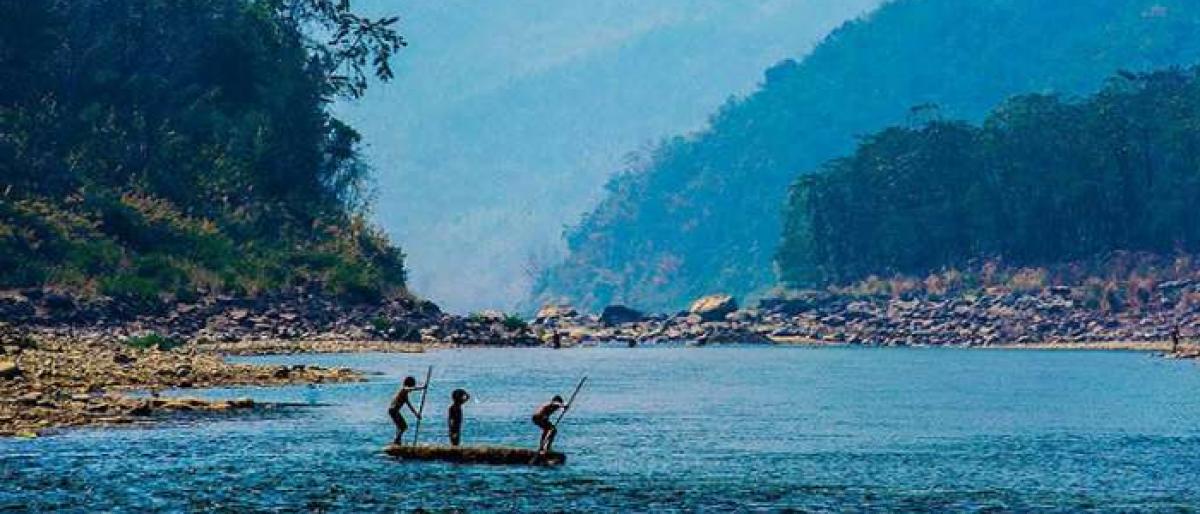Live
- Nine candidates enter the poll fray on first day
- IIT-K, BFI forge partnership to accelerate healthcare innovation
- Nurture self-confidence and growth
- Nominations filed for Kurnool & Nandyal constituencies
- YSRCP’s ‘poor’ candidate owns assets of Rs 161 crore
- 12 nominations filed on Day-1
- Infy profit zooms 30% to ₹ 7,969cr in Q4
- Only 9.83 pc candidates are women in NE states
- YSRCP Bheemili MLA candidate visits various wards
- 37 in fray for three seats in 1st phase, Cooch Behar gets maximum security
Just In

In a major move to increase footfalls and promote tourism in the remote Andaman and Nicobar Islands, the government has excluded 29 inhabited islands in the Union Territory from the Restricted Area Permit RAP regime till December 31, 2022 This means that foreigners will now be allowed to visit these islands without prior permission from the government
In a major move to increase footfalls and promote tourism in the remote Andaman and Nicobar Islands, the government has excluded 29 inhabited islands in the Union Territory from the Restricted Area Permit (RAP) regime till December 31, 2022. This means that foreigners will now be allowed to visit these islands without prior permission from the government.
However, those from Pakistan, China and Afghanistan will not be allowed to enter. It includes those having their origin in these countries. The restricted islands include Havelock, Long Island, Curfew Island, North Andaman, Smith Island, Neil Island, Flat Bay and Strait Island among others.
For entry into Mayabunder and Digilipur, the citizens of Myanmar will require RAP which will be issued with the prior approval of the Ministry. Besides, these 29 islands which are now open to the foreigners without RAP, they would also be allowed to visit 11 other uninhabited islands notified by the UT administration only for 'day visits'.
But, is this the right thing to do for Andamans? There are two reasons for the restrictions prevailing here. One is of course, the military view point, which views the area as a strategic asset. These islands oversee major international sea routes. Secondly, it is a tough job ensuring the protection of natural and marine resources while increasing the tourists flow.
Another important factor here for the government to weigh so much its moves is that fact that there are several protected tribes and the natives of Andamans are becoming extinct. The entire population of the islands has risen from a mere 24, 649 in 1901 to 3, 79, 944 in 2011. This is while the population of native communities like the Great Andamanese, Onge, Jarawa and Setinelese has nose-dived to 550 from 1,999 during this period.
Successive governments have miserably failed in checking the encroachment of the tribal lands and the introduction of diseases by the immigrating communities. One such project was the ATR Andaman Trunk Road) that cuts through the heart of their territory. This has only led to the spread of disease. It has also introduced the native community to tobacco and alcohol. Is this development? Several areas of these islands do not have power and water facilities. Geo-political reasons might force India to open up several of these islands for maritime drills. In its race with China in maintaining an upper hand, India should not forget the interests of the islands and its people.
If only 400 members of Jarawas remain on the Andamans today, the population of the Great Andamanese has dwindled to just 50 - a vestige of population left without its language, culture, identity and pride. Governments that are interested in National Registers for Citizens elsewhere in the country, conveniently and cruelly forget the plight of Andamanese. No one will answer this, including the Opposition. Jarawas have survived for 50,000 years and they just need to be left alone. The Great Andamanese, anyway, will not survive. Is this what we do to them? May be, after all, we all are civilised people. Aren't we?

© 2024 Hyderabad Media House Limited/The Hans India. All rights reserved. Powered by hocalwire.com







